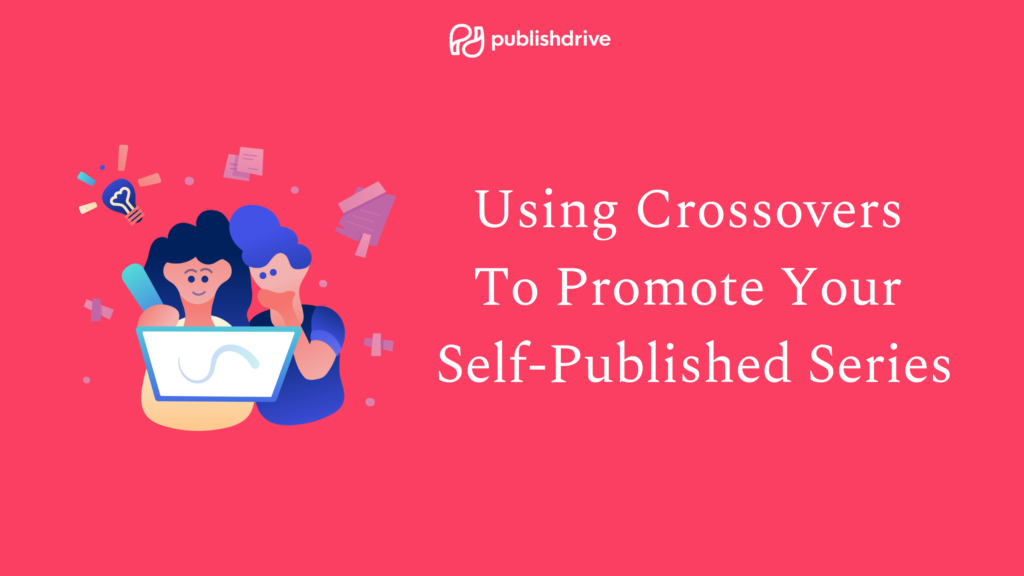Using Crossovers to Promote your Self-Published Series

“Using Crossovers to Promote Your Self-Published Series” was written by award-winning journalist and USA Today bestselling author Jeffery H. Haskell. He’s a lifelong lover of comic books and science fiction, and he owns his geek status by quoting Aliens and Star Trek at every given opportunity. Jeffery lives the dream of bringing his imagination to the page with his bestselling selling series, The Full Metal Superhero!

As a kid, I was raised on a steady diet of comic books, TV shows, and the occasional movie. When I started reading, I learned on Amazing Spider-Man. I remember the first issue I read like it was yesterday. Issue #194. The first appearance of the Black Cat.
I loved it when other heroes would show up in Spidey’s mag. When I watched Magnum PI, I was thrilled when Simon and Simon showed up for two episodes. Crossovers; they’re just so much fun.
One doesn’t have to look much further than the current MCU (Marvel Comics Universe) to know that people in general like the idea of crossovers.
I write Superhero fiction, with two (about to be three) series running concurrently, so crossovers are an important element of my overall marketing strategy. In this post, I’ll explore how crossovers can help promote your self-published series and I’ll give some insight into my own crossover strategy.
How I Leverage Crossovers for My Self-Published Series
My first series is Arsenal; she’s a high-tech superhero, no powers, but lots of brains. Part of her appeal is that she solves problems with science.
The other series, The Wraith, is quite the opposite. It’s my take on vigilante justice. A person not hindered by society. Where Arsenal serves the public good and does her best to save as many lives as she can, The Wraith seeks out brutal, unforgiving, merciless justice.
They are about as far apart as two characters can be. If they were both in the same book, we would call one a foil to the other.
That’s my starting point: two very different superheroes in the same universe and then we’re going to mash them together.
But how? Let’s dive in.
Replicating Success of Book One in the Series
When Arsenal started really selling well, I knew I had something special, but I was a bit unprepared. I had success, but could I replicate it? With Arsenal, I was making about as much per month as I ever had at my full-time tech support gig.
I had a good release schedule, one book every three months and that was the sweet spot. I tried advertising and it picked me up a few new readers but I realized pretty quick, my niche was a small one.
My author friends, who were in space opera and military sci-fi, could bring in thousands of readers with the right ads. Superheroes just don’t have that kind of broad appeal. If I wanted to increase my revenue I had to think outside the box.
At one book every three months, I was writing at a pretty good pace. Technically it only took me one month to write the book, fifteen days to be exact. The rest of the time was spent on editing, planning, thinking, research, etc. I’m a pantser by nature, which means that I write before I have a full (or sometimes any) outline. I spend ten or fifteen thousand words finding the story and characters, then I start over and get to work.
Last year, I spent a lot of time trying to figure out a second hero to start. I had several side characters from Full Metal Superhero I could use. Her sidekick had a rich backstory. I even introduced a number of new characters throughout the year with the intention of writing a new book based on any one of them.
Nothing clicked.
Then, right before the 20Booksto50k Conference in Las Vegas, I was speaking with my wife and she had the best idea ever:
If I were to start a new hero, why not write something so different from what I already had, that it would bring in new readers who maybe weren’t interested in my super-genius paraplegic hero who routinely fought aliens and gods?
Maybe something smaller.
As writers, we’re trained to raise the stakes. Raise the stakes! Go bigger. Bigger than that!
Arsenal went from a small story about a girl trying to find her kidnapped parents and it escalated to giant sea monsters, and megalomaniacal telepathic conquer, to aliens.
Then it got huge.
What if I took a page from my favorite comic book company and made a character who fought crime on the streets? That’s how the idea started, anyway. It quickly turned into something much more.
The tagline for the first Wraith book is, “What if Batman and Punisher had a baby raised by John Wick?” There’s more to the Wraith than even that. The source of her powers was inspired by Venom, and a dozen other comics I’ve read in my life.
Three books later, the Wraith has outsold Arsenal in that same time period. It’s also increased the sales of Arsenal along the way. Both series are ongoing and have elements mentioned in the other.
Now, how to bring them together?
Bringing Audiences of New Readers Together
My initial idea was to do a team-up novel. Take the last few months of the year and write a triple sized book that tied up all the storylines I’d spent 2019 laying down. It would be like an old-school Annual that Marvel and DC used to do.
It was a cool idea, but there was a problem. As I looked at my readership, something became apparent that I hadn’t realized when I hatched my plan.
Half the people who read The Wraith, don’t read Arsenal. Guess what? Half the people who read Arsenal, don’t read The Wraith.
How could I make sure that a storyline started in Wraith #1 would be read by the Wraith audience, if it was concluded in a different book? Books aren’t comics. Just because they have superheroes in them, people aren’t going to go look for a whole other series to read just to finish up the storyline they started.
There was another problem, too. I didn’t want anyone feeling manipulated into buying an extra book.
Then it hit me. The answer, as usual, came from a discussion with my wife (she’s really smart). Close each storyline out in the book it started; just have a reason for the other hero to come over!
Genius in its simplicity and elegance. Arsenal would appear in Wraith #4, and Wraith will appear in Arsenal #9.
Putting the Pieces into Place
While there are a few plot holes to iron out, it is nothing insurmountable. When Wraith shows up in the Arsenal book, I’ll introduce her like a new character, assuming the reader has never encountered her before. The same will go for Arsenal.
One of the freeing things about having ten books with these heroes is I know them inside and out. I also know the readers are willing to stick with me while I massage the story a little.
In theory, this will introduce readers to characters they haven’t read before. I’m constantly amazed when I discover readers who haven’t heard of my other series. While I make sure each book has links to all my series, there are always readers who slip through. This should bring the entire universe full circle.
In the end, even if I only cross-pollinate a little, it will still be more than I had. Who knows, once I have a third hero going, maybe I’ll revisit the idea of a single event style book.
In the meantime, my fans get to enjoy awesome action, thrilling plots, and see some of their favorite characters interact for the first time!
A Note from PublishDrive: Have you written a series that you’re ready to self-publish? Consider going through PublishDrive! We offer free ebook conversion and distribution to 400+ online stores, including Amazon, Barnes & Noble, Apple Books, and more. We can also help you promote your self-published series with built-in marketing tools. Get started by signing up today!